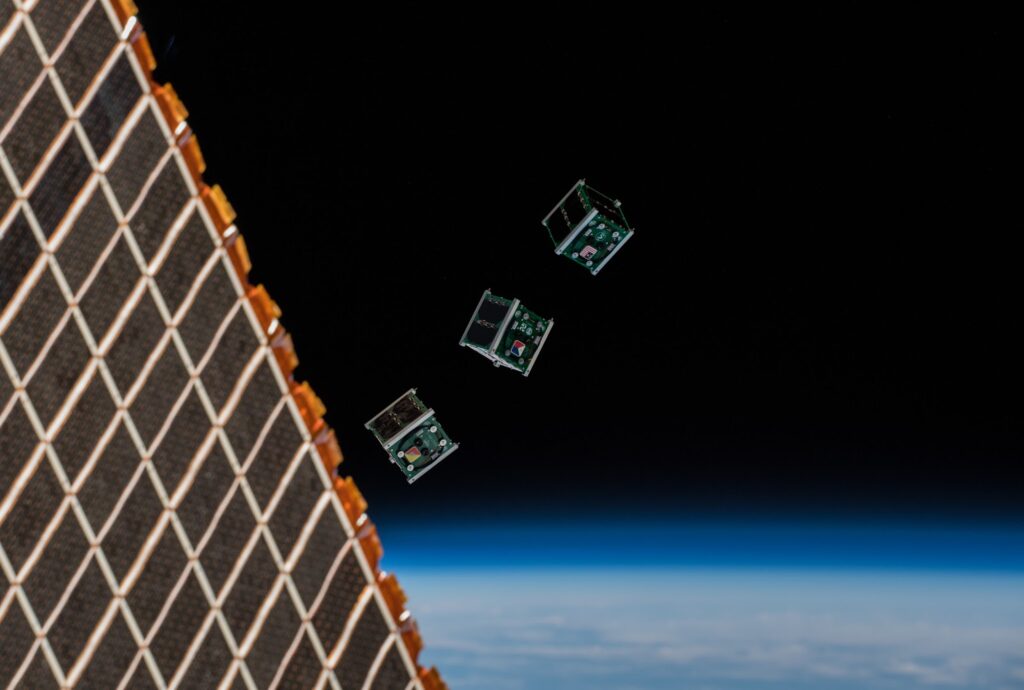CubeSats originated as a budget alternative for launching educational space missions, but their affordable cost and uniform easy-to-scale design have eventually increased technology applications beyond education. Today, CubeSats are used in commerce, environmental monitoring, technology demonstration, and advanced science research — including that of deep space.
Not surprisingly, CubeSat components have evolved along with this tech’s applications, and yet the core essence of these mini-satellites has not changed — CubeSats are still about cost-effectiveness, compact size, and great versatility. The latter is generally achieved by using the most innovative, almost creative, technologies to ensure affordable cost and lightweight design — like water, for example. And yes, water as a CubeSat component is a real thing these days! Below, we will explain exactly how it works, but first, we should start with the basics — what are the main parts of a CubeSat?
Overview of essential CubeSat components
Even though CubeSats are usually small and are often seen as cheap alternatives to traditional satellites, they are still powered by complicated systems and, often, carry advanced payloads. Technically, the payload is the final CubeSat component because it’s not ‘responsible’ for spacecraft operation — however, it is necessary to accomplish specific mission tasks.
But while payloads may differ depending on a mission, some CubeSats components are a must-have for the spacecraft to operate in orbit (or beyond). So, what are the structures of CubeSat? The essential ones are as follows:
Structural Frame
Structure, aka structural frame, is the mounting base for all other CubeSat components — sort of satellite body if you wish. On this note, what is the best material for a CubeSat? Considering that CubeSats must necessarily be lightweight, they are usually made of aluminum alloys, carbon composites, and other components that can withstand harsh space conditions, namely high radiation levels and extreme temperature fluctuations.
Power system
This vital system ensures power supply to all other CubeSat components and systems. Here, we should also explain — what is the structural subsystem of the CubeSat. Usually, it includes additional components necessary for a larger system segment to operate. In the case of a power system, subsystem components usually include solar panels (if there is enough sunlight in the CubeSat destination) and batteries, typically lithium-ion ones — just like we use on Earth but more advanced.
Thermal control system
The thermal control component manages CubSat temperature, which may imply both heating and cooling. Usually, it’s both because temperature fluctuations in space range from freezing cold to scalding hot — not the best conditions for electronics, which require advanced protection. Thermal coating and heat blankets act as passive thermal control components, shielding spacecraft from these extreme temperatures. Some CubeSats are also equipped with active thermal control components, i.e., heat pipes and radiators.
Command & data handling unit
This unit is the main computer that controls all other CubeSat components, including payloads, power supply, thermal regulations, and a few other structural components we will discuss in more detail below. In essence, the command unit is not that different from the computers we use on Earth. However, it’s made of radiation-resistant components and alloys to prolong its operational lifespan in extreme space conditions.
Communication system
CubeSat communication unit ensures communications with the ground stations. Its main sub-structures include antennae, transmitters, receivers, and anything else necessary to receive commands from the ground and send data back ‘home’ for analysis.
Attitude Determination and Control System
Attitude determination ensures spacecraft stays in its designed position. First of all, this component ensures that CubeSat antennae are pointing in the right direction to collect and transmit data. Next, as its name suggests, this component can measure attitude and make minimal adjustments to ensure CubeSat remains in its correct orbit. This system cannot make any advanced maneuvers, though — but that’s where our final CubeSat component comes in.
Propulsion system
This is a relatively new addition to the CubeSat building, but there has been impressive progress in the last few years. Propulsion is necessary for more advanced CubeSat missions when a spacecraft must perform orbital adjustments — that is, change its attitude or even move to an entirely new orbit.
Here, we must once again recall — what are the requirements for a CubeSat? Minimum weight and compact size, which calls for some creativity when designing CubeSat propulsion systems. Thrusters, for example, are often powered by gases, like xenon and other chemical components.
But water as a propulsion component looks more promising both in terms of sustainability and budget. NASA, for example, is already experimenting with a water-based propulsion system in its Pathfinder Technology Demonstrator mission. The CubeSat uses electrolysis to split water into hydrogen and oxygen, which are then combusted to produce thrust. This system is environmentally friendly, affordable, and in the long run, more practical, because water is readily available in space, especially on the Moon NASA is already heading for.
Similarly, ESA has been developing the Iridium Catalysed Electrolysis CubeSat Thruster (ICE-Cube), which also uses water as a propellant. And while the technology has not been mass adopted yet, there is a good chance that it will be — considering NASA and ESA are already onboard. Soon enough water may yet become one of the essential CubeSat components — but we’ll just have to wait to see for ourselves.


